Android Phone Fans |
- Google prepares for the age of wearable tech, begins work on Android Fitness API
- Jawbone updates ERA Bluetooth headset for 2014 with improved hardware and companion app
- Google announces smart contact lenses (yes, this is happening)
- Driving with Google Glass ruled legal by California judge, you just can’t use it [UPDATE: VIDEO]
- Sony Xperia T, TX, V and SP scheduled to receive Android 4.3 later this month (or early Feb)
- Leaked HTC M8 case reveals cutout for rumored fingerprint scanner or extra camera lens
- Nokia Normandy user interface leaks again; doesn’t know if it wants to be Windows or Android
- Samsung Galaxy Tab3 Lite announced as an affordable 7-inch tablet
- Sprint’s LG G Flex arrives Jan 31st online, Feb 7th in-store for $300 contract or $150 down payment
- OnePlus trademark means HTC might have to find a new name for their next flagship
- Google Now cards come to Chrome desktop Canary build
- Is OUYA in trouble? Original founder and VP of product development departs from company
- LG G2 announced in Gold and Red
| Google prepares for the age of wearable tech, begins work on Android Fitness API Posted: 16 Jan 2014 06:08 PM PST
If there’s one thing we learned at CES recently, it’s that the age of wearable technology is upon us. At CES, we saw smartwatches, smartglasses, smartbands, and other wearable tech from numerous manufacturers. As the fairly new industry moves forward, so does the need for our smartphones to better communicate with these devices. Fitness lovers will be excited to learn that Google is working on a new fitness API for Android. This new API will be able to tap into your devices sensors and store the data on your Google profile. The Fitness API will allow applications to view and edit fitness data, fitness tracking, access health information, and access activity data.
This API could become available via a Google Play Services update or in the next version of Android. That’s all we know for now. We’ll keep you posted as more information becomes available. Source: Google System |
| Jawbone updates ERA Bluetooth headset for 2014 with improved hardware and companion app Posted: 16 Jan 2014 05:35 PM PST All new for 2014, Jawbone is announcing a revamp of their popular ERA Bluetooth headset. Doing probably what Jawbone does best, they’ve managed to make the ERA smaller, more comfortable, and crammed inside better audio and microphone technology. Using what Jawbone calls “Noise Assassin” noise-cancellation technology, callers on the other line should hear you clearer than ever before, even in noisy environments. Audio quality of the headset itself has also been improved, letting the users listen to music or podcasts in stunning clarity (and only one ear, of course). Jawbone has also released a companion app for the ERA, allowing users to program commands to use with with Google Search/Now (or Siri). It even features a built in locator, should you ever misplace your headset. Pretty handy. The ERA is available in 4 colors for $100 at the usual electronics retailers, or for $130 for the special charging case bundle that is said to “double” the headsets 4 hours of talk time using a built-in battery. [Jawbone] |
| Google announces smart contact lenses (yes, this is happening) Posted: 16 Jan 2014 05:10 PM PST When Google first announced the Google Glass Project, it was easy to imagine a future where the wearable would eventually become so small, they’d be able to cram the technology into a contact lens. While that technology is still a ways off, Google did surprise us today when they announced an all new project they’ve been working on: “smart contact lenses” — only the aim is different than you probably think. More for measuring the glucose levels in diabetes patients, the smart lenses are able to monitor patients and notify them immediately when levels drop to dangerous levels. This is done by measuring the glucose found in the subjects tears, giving relief to diabetic tired of pricking their fingers multiple times a day. Current prototypes are able to generate glucose readings once per second, making monitoring far more frequent, and a lot less painful. Progress is still early, but Google hopes to outfit the contact lenses with tiny LEDs to serve as a warning to the wearer when glucose has exceeded, or fallen below thresholds. Google is already in talks with the FDA, and is currently looking for partners to bring this new technology to market. We can’t help but wonder as this technology matures, the other areas it could possibly expand to in the future. Google, color us impressed. |
| Driving with Google Glass ruled legal by California judge, you just can’t use it [UPDATE: VIDEO] Posted: 16 Jan 2014 03:20 PM PST BREAKING:A judge in the State of California has dismissed a citation for California woman ticketed for driving while wearing Google Glass. This story is developing and will be updated with details as they emerge. Press conference videoWe were live at the court where Cecilia Abadie came out victorious against the state of California! She held a press conference right after she “walked free” and we got it all on video for you! Check out the video to see what her opinions on the matter are. In October of 2013, Cecilia Abadie became the first person to receive a traffic ticket for driving while wearing Google Glass. Initially pulled over for speeding, the California Highway Patrol Officer issuing the ticket tacked on an additional charge for “Driving with Monitor visible to Driver (Google Glass)“, sparking a worldwide debate on the safety and legality of driving while using and/or wearing Google Glass. In this case, the distinction between the two is important. The officer relentlessly questioned Abadie on her reason for driving with Glass and insisted that it blocked her view and created a distraction. But did it? Abadie (represented by San Diego Traffic Attorney William Concidine) argued that her Google Glass was not in use at the time of the speeding offense and she was therefore not in violation of any law, a claim that seems almost impossible to refute given the circumstances. The judge sided with Abadie, noting there wasn’t enough evidence to prove the Glass display was active while she was driving. According to Commissioner John Blair of the San Diego County Superior Court who heard the case, wearing Google Glass while driving is perfectly legal in California, supposing it’s turned off and/or not in use as in this case. Would it have been legal for Cecilia to use Glass in any way, shape, or form while driving? How much further can you push the envelope – beyond wearing them while turned off – before you’re breaking the law? To answer that question, we’ll probably need someone else to “break the law”, forcing further decisions to be made. For now, it was made clear that Abadie would have been found guilty if she was actively using and interacting with the illuminated display on Google Glass. Keep in mind Google built Glass with features like turn-by-turn driving directions that make it very obvious in-vehicle use were and are intended. (Update: Though official statements by Google warn users to obey local laws and act safely/responsibly, Google never outright suggests driving directions be used by drivers and it’s possible this feature is intended for use by passengers.) What it’s like: Driving with Google GlassWondering what it’s like to drive around while wearing Google Glass? If you’re wearing but not actively using Glass, you’ll see nothing. On the other hand, here’s an example of using Google Maps with Glass. The above simulated example of driving with Google Glass is part of our full Google Glass Review. From turned off to heavy use, Google Glass use while driving may or may not violate the California law in question depending on how it’s interpreted. And in the court of law interpretations mean everything, potentially setting precedent that sets the long-term dividing line between right and wrong. Ms. Abadie’s situation falls to one extreme – she was wearing Glass but it wasn’t in use – but the spectrum of possible use cases is wide open. New technology, posing new questions, with new gray areas. Where should we draw the line?I haven’t heard anyone lobbying to legalize watching videos on YouTube while operating a vehicle and wearing Google Glass- obviously lines should exist. People can choose to break laws and cross lines (ex: texting while driving), but does that mean we should categorically ban using the technology even when done in a responsible manner that respects safety and promotes innovation? The line Abadie allegedly crossed is listed on the ticket (and California DMV website) as “V C Section 27602 Television“. Gray area galore: is Google Glass simply a “display” with “entertainment” capabilities that violates this article or is it exempt due to “article b” categorizing it as a mapping display or supplemental enhancement? Or does it qualify as both, and if so, on what side of the law does that land Google Glass? Right now we simply know that the State of California will allow you to drive while wearing Google Glass, provided the display is turned off. But given the outrageous complexity of automotive controls and entertainment these days and the equally distracting lack such technology (read below), it’s hard to imagine a world where Google Glass is considered a distraction compared to the alternatives. Consider that while Cecilia Abade was initially issued a ticket for breaking the law, at the same exact time you could have walked into a car dealership, bought a brand new car with nearly identical technology built-into the windshield, and legally driven it through any state in the USA. Have fun in your brand new Camaro ZL1: Nevertheless, lawmakers in several US states including Delaware, West Virginia, and Maryland have made serious efforts to ban Google Glass. Meanwhile, check out the chops on the brand new Tesla Model S, complete with a internet connected 17-inch touchscreen on the middle console that is sure to have every driver laser focused on the road like an Aderall-popping college student during final exams.
Note the sarcasm. For comparisons sake, here is the semi-transparent display you can optionally see when looking through Google Glass: If head mounted displays are considered a safety concern, printing directions from Mapquest should be illegal and anyone using paper maps should be issued life sentences. Have you ever seen someone following scribbled down directions or trying to reroute to avoid traffic with a paper map? It’s madness… and the inconsistency of lawmakers is laughable. You can put this day in the record books but make no mistake: this is just the very beginning of a long and winding road that will play out across decades, not days. Outrage Against Google “Glassholes”It wasn’t long after Google Glass launched (read our full Google Glass Review) that public sentiment became sharply divided. On the one side people were irritated, dismissive, concerned about privacy, and outraged that such a stupid looking and pointless technology would be introduced and embraced. Just as using your smartphone in social settings and public places can stick out like an inappropriately sore thumb, so can using Google Glass. But while Smartphones are status quo, many perceive Google Glass as the rarest of nerd geekery (or is it geek nerdery?), and the social acceptability of using Google Glass at all was soon brought into question. It suddenly became cool to diss Google Glass, officially entering mainstream humiliation mode after appearing as the topic of a Saturday Night Live skit and a Daily Show segment. Mashable put out a hilarious video depicting the worst of this social behavior in a video about “Glassholes” and unfortunately the name stuck. Before long the uninformed masses were jumping on the ignorant mud flinging bandwagon. The technology was just born but would it even get a chance? Google Glass: Exploring the UnexploredIt’s no coincidence that the first wave of Google Glass users, trying out a product still in beta, have been dubbed “Explorers”: they’re entering uncharted territory. As a Google Glass Explorer myself I’ve consistently received feedback from strangers who can’t help but ask what I’m wearing. Some are breathtakingly excited to see them for the first time, “Oh my God is that Google Glass?!” Some very curious, “What’s that on your face?” Some have even been downright rude, making a point of approaching me to explain why I look stupid or how I’m contributing to the invasion of privacy and end of human civilization. But if you’re patient enough to explain it to people – both those who are optimistic and positive and those who are rude and negative, you almost always hear the same response when you let them give Glass a try: “Wow, that’s awesome!” Whether smartglasses become mainstream remains to be seen, but innovation and fear are enemies. Google Glass will iterate, evolve, and be exciting to follow regardless of success or failure. But before you knock it, give it a try. Court Case and PointWhile those urging to ban Google Glass in the car claim a ban would be good for safety, there are others leveraging the exact same technology to save lives. Take for example DriveSafe, a recent App developed for Google Glass that alerts the driver with audio tones and physical vibrations if they’re dozing off while at the wheel.
Some scary and disturbing facts from recent polls by the National Sleep Foundation and Center for Disease Control:
How many millions aren’t around to explain that falling asleep at the wheel is the reason they died in a car accident? Google Glass can be irresponsibly used and increase the risk of an accident, but it can also be used to save lives among other things. We’re much better off when technology is embraced and monitored rather than feared and outlawed. At least that’s my belief. You’d better get used to it because with the announcement of the Open Automotive Alliance, we will be seeing Google Glass, Android, and a whole lot of unknown future technological awesomeness coming to cars in the next few years. If you’re absolutely adamant that driving while using Google Glass is distracting and should be illegal, don’t worry… it won’t be long before cars are driving themselves. Scratch that… they already exist. UPDATE #1: Cecilia speaks to press outside the court house following her favorable decision. Video coming soon. UPDATE #2: it’s official… Abedie publishes the “not guilty” proof on her Google+ profile. |
| Sony Xperia T, TX, V and SP scheduled to receive Android 4.3 later this month (or early Feb) Posted: 16 Jan 2014 03:20 PM PST Sony never beat around the bush when it came to Android updates for their Xperia line of devices. Back in November, they made clear their plans to update specific devices to Android 4.3. In December, we saw the Sony Xperia Z, Sony Xperia ZL, Sony Xperia ZR, and Sony Xperia Tablet Z all receive their update to Android 4.3 Jelly Bean — now it’s time for Sony to make good on the rest of their promise. According to Sony Mobile’s Twitter account, the Sony Xperia T, Sony Xperia TX, Sony Xperia V, and Sony Xperia SP are now scheduled to receive their updates to Android 4.3, only later this month or early next. This is only a few months shy of Sony’s originally stated December release, but sometimes delays happen. We get it. Once again, the Xperia Z, Xperia ZL, Xperia Tablet Z, Xperia Z Ultra and Xperia Z1 are all confirmed to receive Android 4.4 KitKat, although Sony was mum on release timing. If less official sources prove correct, the folks at AndroidSAS have it on good authority that Android 4.4 will hit the Sony Xperia Z1 beginning in February. The update is said to bring improved camera performance, along with a battery enhancing “STAMINA mode.” As with any software updates, 4.4 will be subject to carrier approval. |
| Leaked HTC M8 case reveals cutout for rumored fingerprint scanner or extra camera lens Posted: 16 Jan 2014 02:00 PM PST We know we’re only a few short months away from the HTC One successor being announced, given the original was released almost a year ago, it only makes sense. That being said, leaks have already begun seeping from the woodwork. The latest is an image of a 3rd party case — discovered by the boys at GottaBeMobile — made especially for the upcoming HTC M8 (HTC One 2, or whatever you want to call it). While not revealing too much, we can see an extra cutout, plain as day, sitting right above where the camera/LED flash would be. This confirms 1 of 2 rumors: the first being a possible fingerprint scanner, the second being the rumored extra camera lens for improved low light shooting. You’ll also notice the extra space for the LED flash alongside the camera, indicating the M8 might have a 2-stage flash, ala iPhone 5s. We’re expecting the HTC One 2 (M8) to receive an official announcement somewhere in late February, with a release shortly after. It’s also possible we’ll learn more during MWC 2014, if HTC doesn’t provide a separate press event. We’ll keep you posted. |
| Nokia Normandy user interface leaks again; doesn’t know if it wants to be Windows or Android Posted: 16 Jan 2014 12:20 PM PST We’ve seen just about all we could of Nokia Normandy at this point, but the leaks aren’t over. Another purported shot of the Android device’s user interface has leaked, giving us a closer look at what users might be treated to if this phone ever sees the light of day. What we’re treated to is an experience that seems markedly confused. This is supposed to be Android, but you can clearly see Nokia doing their best to emulate the Metro look-and-feel that the Windows platform is now known for. The original leakster, @evleaks, put this caption alongside the leaked image:
That would suggest that the right portion of this user interface is another option the user can switch to in case they’re not down with the tiles. Either way, what you see is atypical of normal Android devices, seemingly giving the user no way to freely place widgets and icons. It’s tough to say how well this would pass with consumers without having used the device or seen a full demo of the user interface. We imagine those who have grown accustomed to the classic Android experience won’t be particularly inviting of what the Nokia Normandy would bring to the table. We’re still wondering if Microsoft is going to let this fly (assuming their proposed purchase of Nokia is approved by all the relevant governing bodies), so we’ll try not to get too ahead of ourselves and pass judgment either way. [via WinSource] |
| Samsung Galaxy Tab3 Lite announced as an affordable 7-inch tablet Posted: 16 Jan 2014 11:10 AM PST Samsung has added yet another new device to their growing line of Samsung Galaxy Tab devices. This one is the Samsung Galaxy Tab3 Lite, a 7-inch slate meant to get into your hands for very little money. The specs on this thing wouldn’t excite many of you, though they don’t sound bad for someone who wants a device for light entertainment and learning:
And that’s pretty much the gist of it. You can expect Samsung’s custom user interface, known by most as TouchWiz, on top, giving you access to features like panorama shots, Samsung Link and more. 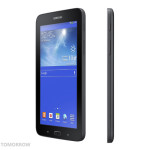 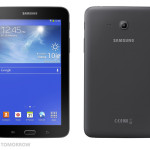 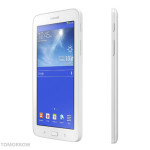 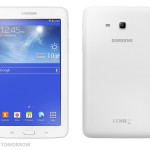
The device is slated for a global release in both black and white, and will come in WiFi and WiFi + 3G configurations. That’s about all we know for now, and while pricing isn’t set in stone just yet, Samsung suggests this thing could come as cheap as around $130 for the WiFi-only model. [via Samsung] |
| Sprint’s LG G Flex arrives Jan 31st online, Feb 7th in-store for $300 contract or $150 down payment Posted: 16 Jan 2014 09:15 AM PST Sprint has just announced that their version of the LG G Flex would be arriving to consumers starting January 31st, the very last day of this month. The device will only be available online at that point, though the in-store launch happens just a week later on February 7th. You can drop down $300 and sign a two-year contract to walk away with it. Sprint is also allowing you to pay for the full device over 24 months’ time with a $150 down payment using Easy Pay (that’s $20.84 per month for 23 months). LG confirmed Sprint as one of the American carriers looking to launch this thing last week at CES (as well as T-Mobile and AT&T), and also confirmed that their version would come with Sprint Spark radios. Sprint Spark is the name Sprint gave to their latest network upgrade that makes use of a third building-friendly spectrum to deliver faster and more reliable LTE data connections. That’s pretty much the length of Sprint’s own specializing in terms of hardware, as everything else inside is just as it was in the international version Here are the specs if you don’t remember:
The LG G Flex was designed to be virtually indestructible, with a flexible display and a self-healing back being among the many things LG’s done to make it as durable as can be. Let us know if you’ll be looking to scoop one up later this month by dropping a comment below. Don’t forget to check out our hands-on from CES 2014. |
| OnePlus trademark means HTC might have to find a new name for their next flagship Posted: 16 Jan 2014 08:27 AM PST A couple of weeks ago, rumors suggested HTC’s follow-up to the HTC One (otherwise known as the HTC M8) would be called the HTC One+. That belief stems from leaked ROM files containing information about the phone, in which it was referred to as “One+.” It doesn’t sound like a terrible name, right? It just “sounds right,” and it would allow HTC to continue building on the “One” brand they’ve been building since early 2012. But a recently discovered trademark filing reveals HTC might have a bit of trouble launching a smartphone with that name (should the aforementioned rumor turn out to be accurate). Pete Lau’s OnePlus — the company spawned from bushy-eyed former Oppo executives who are going to help CyanogenMod create their first phone — seems to own the One+ trademark here in the United States. USPTO trademark filing #86108163 describes a character mark that consists of the word “One” with the plus symbol following it. That mark is owned by Shenzhen Oneplus Science & Technology Co., which we know to be the full, official company name of OnePlus. The trademark filing covers a broad range of consumer electronics, including tablets and mobile phones. The filing was registered November 1st, 2013, just shy of two weeks before we first broke the story that CyanogenMod and an unknown partner had teamed up to create a new smartphone built for and by CyanogenMod from the ground up. If true, HTC might be facing some legal trouble by using “HTC One+” for the name of their next smartphone. You might ask yourself how HTC was able to get away with the HTC One’s name in the first place, but the Taiwanese company only owns “HTC One” as a whole, and not “One” or any other form or variation of it. Trademark laws can be quite finnicky, so it’s tough to say what would happen should HTC go through with alleged plans to name their next big smartphone the HTC One+. HTC likely has a team of very competent lawyers behind them, so if they do go through with it then that means they were probably able to find a keen loophole that would help them avoid any legal ramifications.
Otherwise, it definitely isn’t too late to change the phone’s name considering it isn’t even official yet. We expect HTC to remove the curtains from the device next month once they take the stage at Mobile World Congress, so it won’t be long before we find out what they decided on. |
| Google Now cards come to Chrome desktop Canary build Posted: 16 Jan 2014 07:11 AM PST We’ve been hearing for a while that Google is working on bringing Google Now to the desktop version of Chrome (and, by extension, Chrome OS). We finally have our first real assurance that this is happening. The latest build of Google Chrome on the Canary channel has included support for several Google Now cards. If you’re not familiar, Chrome Canary is like the alpha channel for Google Chrome. Development on it is so volatile that Google warns the browser might outright break and cease to work in some instances, meaning this is only meant for developers and early adopters who like to be on the bleeding edge of the software cycle. Google took care to explain the new feature in the support documents for Canary build:
To enable it, you’ll just need to enter the following into the latest build’s address bar:
From there, set the value from “default” to “enabled,” and then elect to relaunch the browser. You should now be seeing Google Now cards as they pertain to you and your location. Not all of the known Google Now cards seem to be supported just yet, though we imagine Google will flesh things out over time and bring us a more familiar suite of cards once this feature eventually hits beta. If you’re feeling a bit adventurous, you can head here to grab the Canary build and give it a try for yourself. Otherwise, wait for it to hit Chrome’s beta or stable channels (at which point we imagine Google will go into even more detail about all of this). [via Michael Davies] |
| Is OUYA in trouble? Original founder and VP of product development departs from company Posted: 16 Jan 2014 05:57 AM PST Uh-oh. There might be some trouble in OUYA-land, though it’s entirely possible we’re just reading this story with too much FUD in our eyes. OUYA founding member and vice president of product development Muffi Ghadiali has left the company on his own terms, according to TechCrunch. While there’s no clear indication as to why Ghadiali stepped down at this point in time, you wouldn’t be alone in thinking that he might be looking to abandon what could only be described as a sinking ship. OUYA gained tons of steam on its way to becoming the first huge Kickstarter sensation. The project generated millions of dollars on the crowd-sourced funding website, and the company ended up gaining much, much more through several rounds of investor funding. OUYA — an Android-based gaming console that prides itself on being open and inexpensive — had suddenly become more than just a few folks trying to sell an Android box. They’d become a legit company, and they’d looked toward a very wide horizon. There were a few things keeping OUYA back from the start, though. While third-party development seemed full and fruitful, it wasn’t long before folks figured out that the experience didn’t offer much more than what you’d be able to find on today’s smartphones and tablets. OUYA was able to snag a couple of cool timed exclusives, but they weren’t enough to convince many folks to go out and spend $100 on this thing (and, hey, they’d be coming to other devices soon anyway). You also have to consider that the hardware was outdated before it even launched. As nice as Tegra 3 was at the time OUYA was announced, it was quickly outclassed by NVIDIA’s own Tegra 4 and Qualcomm’s Snapdragon line of chipsets. It only had 1GB of RAM. It simply didn’t seem equipped for long term success. Reports of slow hardware sales and meager profits for developers had tons of people writing the OUYA off. Couple all of that with the fact that tons of other players are starting to throw their hats into the Android gaming console ring, and you can see why OUYA might not be as magical as it once seemed. But the OUYA isn’t dead if you’re to believe the following official statement from the company regarding the departure of Ghadiali:
We’re especially intrigued by that first part about “next phase” of business and product development. We can’t be sure if this means they’re working on some sort of follow-up product, if they’re striking more deals between developers for exclusive content (they had over 10,000 developers on board before the thing was even released), or anything in between. That said, it sounds like OUYA won’t be going out without a fight, so we’ll definitely keep an eye out for whatever they might be doing from this point forward. |
| LG G2 announced in Gold and Red Posted: 16 Jan 2014 05:09 AM PST LG has announced their flagship 2013 smartphone in two new colors. There’s not much surprise here — there’s red, and then there’s gold. They’re both identical to the original models under the hood, with a 2.2GHz Snapdragon 800 processor, 2GB of RAM, 5.2-inch 1080p display, 13 megapixel camera with optical image stabilization and more. The only difference is that these kits have a fresh coat of paint. The Red LG G2 is of some sort of bright red shade. We can’t say for sure what shade this is, but it would most definitely stand out in a crowd. The golden model is more reserved. It’s not actual gold or gold-plated, obviously, but it does attempt to give off that feeling. Some would say it has a rather tacky feeling, though these things always come down to personal taste so you’ll have to decide that for yourself.     We’re not sure if we’ll be seeing these devices launch in widespread fashion. Select Singaporean carriers have already announced plans to carry it, but that’s about as much as we’ve heard up to this point. We wouldn’t count on being able to snag one unless you import, though we imagine it’s probably not worth going through that sort of trouble when you could just as easily by yourself a new case. [via TechDroid] |
| You are subscribed to email updates from Phandroid To stop receiving these emails, you may unsubscribe now. | Email delivery powered by Google |
| Google Inc., 20 West Kinzie, Chicago IL USA 60610 | |





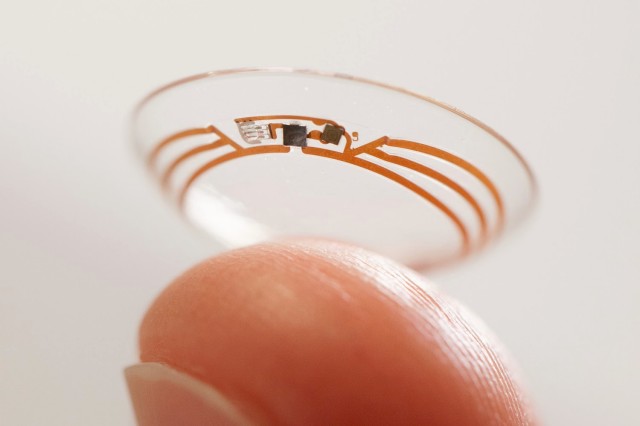















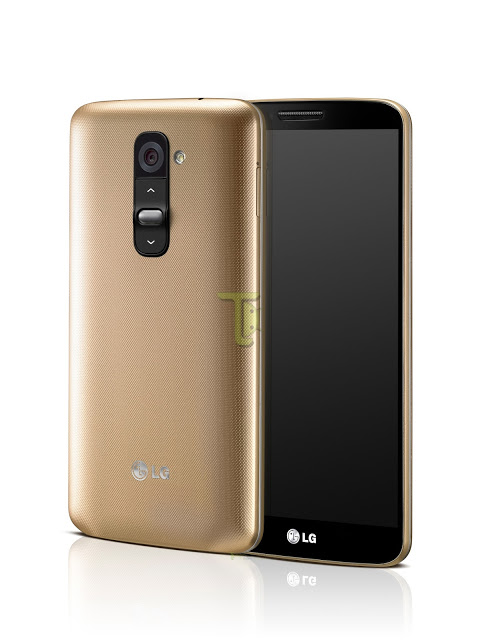
No comments:
Post a Comment